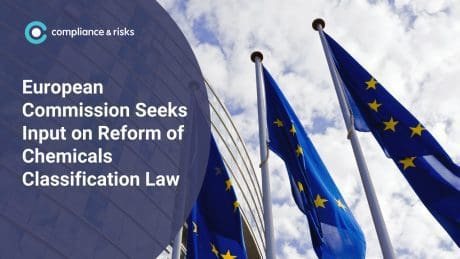
First Official Guidance on UK RoHS Exemptions Published


Following its departure from the EU, the UK operates a RoHS regulatory regime that is no longer bound by EU rule of law – something that has provided scope for Defra to take separate decisions to the European Commission on RoHS exempted applications. In UK legal terms, this separation was brought about through the adoption of the Hazardous Substances and Packaging (Legislative Functions and Amendment) (EU Exit) Regulations 2020. These Regulations detail a process for businesses and/or industry groups wanting to apply for new exemptions, or renewals of existing exemptions, from 1 January 2021 onwards. All exemptions that applied whilst the UK was a member of the EU have been carried over into domestic legislation. However, any future changes in exemptions as may be required by businesses to continue placing electrical and electronic equipment (EEE) on the UK market will need to be sought from – and granted by – Defra, not the European Commission. Provided below is some in-depth analysis of what Defra’s guidance has to say.
Exemption Validity
Although the guidance, at first reading, would indicate that only a set validity period of 5 or 7 years (depending on the category of EEE in question) can be granted, when reading the below extract of the legislative text it can be understood that the validity periods are for a maximum of these time periods.
“The expiry date must not be more than:
- 5 years from the date on which the exemption or renewal comes into force, for an exemption relating to EEE in category 1 to 7, 10 or 11
- 7 years from the date on which the exemption or renewal comes into force, for an exemption relating to EEE in category 8 or 9″
Exemption Criteria
UK RoHS exemptions shall be reviewed against criteria similar to that used within the EU. For example, consideration will be given to whether a substance substitution is scientifically or technically practicable or reliable, if the negative social, health and consumer impacts of substitute are greater than the benefits, and if granting the exemption would weaken environment and health protection provided by REACH. Interestingly, also included as potential points of consideration are the availability of a substitute, life cycle assessment on impacts of exemption (carried out according to ISO 14040, ISO 14044) and the impacts on innovation.
Application Process
The UK has its own application forms which can be used to change, renew or delete exemptions. While the form shares many similarities to the EU RoHS form, the information provided of course has to relate to the UK specific uses of the substance and the amount of a substance entering the UK market.
Pending Decisions
It is noteworthy that it is not necessary to make a separate application to Defra if an application was lodged with the European Commission prior to 31 December 2020, as transitional measures are in place for these. Those transitional measures allow Defra to make a decision once the Commission has reached its own decision. The details on how such a decision would be made are limited at present though. Upon enquiry further to Defra, RINA was advised that: ‘Any decision to deviate from the EU would only apply to GB (not Northern Ireland) and would be taken after careful consideration and after consultation with interested parties’.
Want access to more in-depth analysis from our expert Knowledge Partner Network? Sign up to our newsletter!








